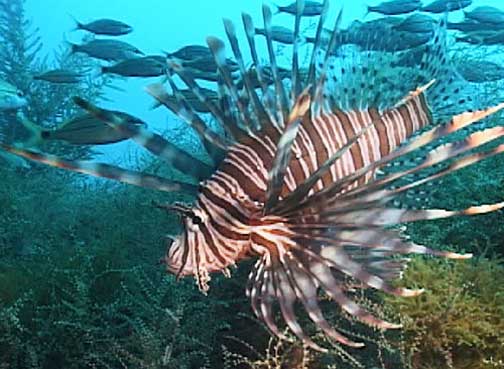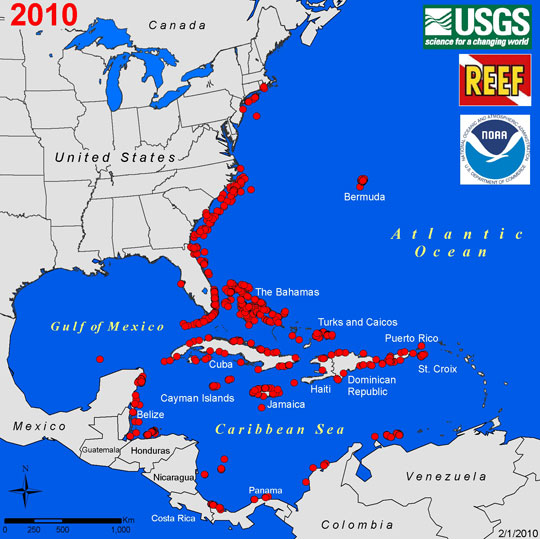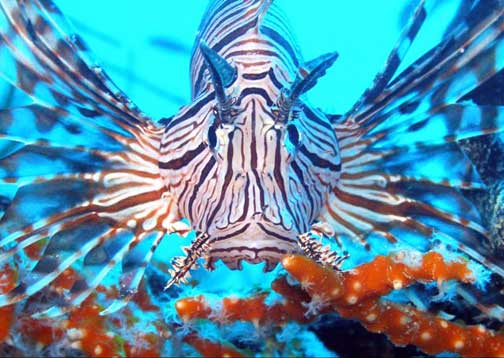“The lionfish is a voracious predator and it eats a lot! ... over 50 species of other reef fish have been found in lionfish stomachs (plus) a whole octopus.”
- Lad Atkin, REEF



February 25, 2010 Key Largo, Florida - The lionfish is any of several species of beautiful, venomous marine fish of the family Scorpaenidae native to the Indo-Pacific oceans. Lionfish extend from western Australia and Malaysia east to French Polynesia, the Pitcairn Islands, southern Japan and southern Korea.
Click here to subscribe and get instant access to read this report.
Click here to check your existing subscription status.
Existing members, login below:
© 1998 - 2024 by Linda Moulton Howe.
All Rights Reserved.

